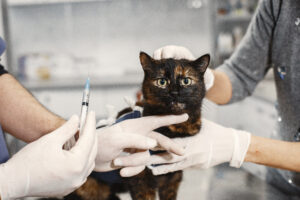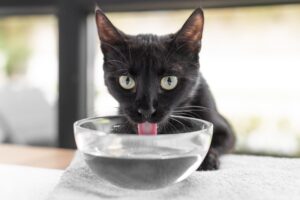Introduction
The world of feline companions is vast and diverse, with each breed bringing its own unique characteristics to the table. Among these fascinating breeds, the long haired Russian Blue cat has garnered significant attention from cat enthusiasts worldwide. While traditional Russian Blue cats are known for their short, dense coats, the long haired variant presents an intriguing twist on this beloved breed.
Many people are drawn to the Russian Blue long hair mix for their stunning appearance and distinctive personality traits. However, beneath the surface of these elegant creatures lie some surprising and occasionally disturbing facts that even dedicated owners might not be aware of. Whether you’re considering adopting a long haired Russian Blue kitten or simply curious about these magnificent felines, this comprehensive guide will dive deep into five surprising aspects of these cats that might change your perspective on them forever.
The Russian Blue cat with long fur presents a fascinating case study in genetics, behavior, and feline health that deserves careful examination. By the end of this article, you’ll have gained valuable insights into what makes these fluffy Russian Blue cats truly unique—for better or worse. So, let’s embark on this journey of discovery about the mysterious world of long haired Russian Blues.
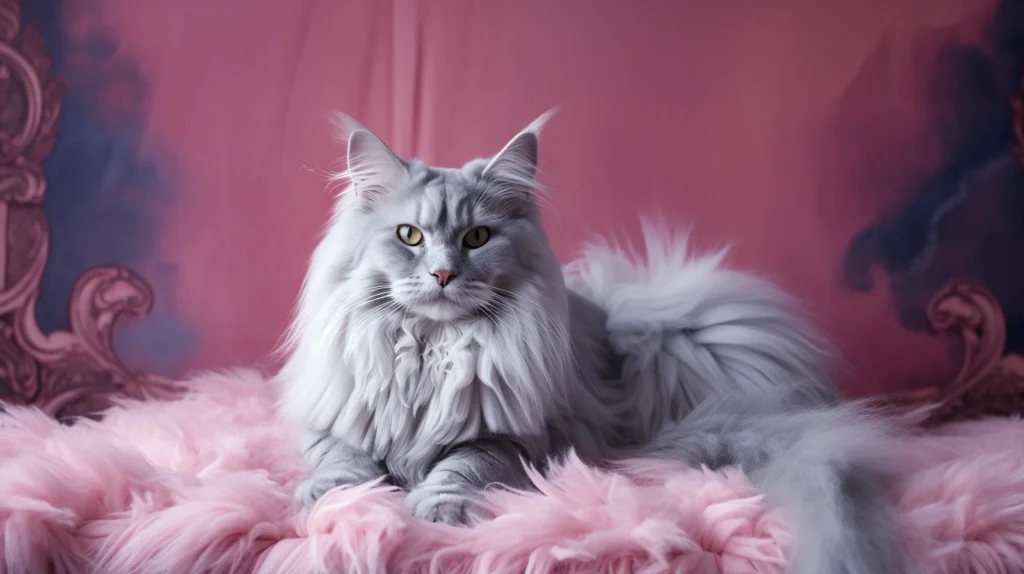
Understanding the Long Haired Russian Blue Cat
Before we delve into the surprising facts about long haired Russian Blue cats, it’s essential to understand what exactly these cats are. The traditional Russian Blue is a naturally occurring breed with a distinctive short, dense double coat of blue-gray fur. The long haired Russian Blue, however, is typically not a purebred Russian Blue but rather a mix or variant.
Many cats that appear to be long haired Russian Blue cats are actually Nebelung cats (considered by some to be the long-haired version of the Russian Blue), or they may be a Russian Blue Maine Coon mix or another Russian Blue mixed breed. The confusion is understandable, as these cats often retain the striking blue-gray coloration and many physical characteristics of the Russian Blue while featuring longer fur.
When compared to other long haired grey cat breeds, these cats stand out for their particular shade of coat color and distinctive personality traits inherited from their Russian Blue ancestry. The Russian Blue cat appearance is characterized by bright green eyes, a wedge-shaped head, and that signature blue-gray coat, which in the long-haired variant becomes even more spectacular.
For those wondering “how to tell if my cat is a Russian Blue” with long hair, there are several Russian Blue cat characteristics to look for beyond just the coat length. These include the emerald green eyes, the straight nose profile, the specific blue-gray color with silver tipping, and the distinctive personality traits such as intelligence, shyness with strangers, and devotion to their owners.
Now that we have a clearer understanding of what makes a long haired cat that looks like Russian Blue, let’s explore the five disturbing facts that may surprise even dedicated enthusiasts of this breed.
Disturbing Fact #1: The Genetic Mystery Behind Long Fur in Russian Blues
The first disturbing fact about long haired Russian Blue cats relates to their genetic makeup. True Russian Blues are known for their short, dense double coats—this is one of the defining Russian Blue cat characteristics. The Russian Blue coat length is standardized in the breed, and according to most major cat associations, a purebred Russian Blue should not have long fur.
This means that a cat with genuine long fur Russian Blue features is almost certainly not a purebred Russian Blue at all. When you see a fluffy Russian Blue cat, what you’re likely looking at is either:
- A Nebelung (often considered the long-haired Russian Blue equivalent)
- A Russian Blue mixed breed with Persian, Maine Coon, or another long-haired breed
- A domestic longhair with coloration similar to a Russian Blue
This genetic reality can be disturbing for owners who have purchased what they believed to be rare “long-haired Russian Blues” at premium prices, only to discover they actually have a mixed-breed cat. The marketing of these cats as purebred long-haired Russian Blues is a practice that concerns many ethical breeders.
When comparing Russian Blue vs Nebelung cats, the primary difference is coat length, as Nebelungs were specifically developed to be the long-haired equivalent of Russian Blues. Understanding the Nebelung cat vs Russian Blue distinction is crucial for potential owners seeking either breed.
For those asking “is my cat a long haired Russian Blue,” the unfortunate reality is that unless your cat is specifically a Nebelung or a verified mix, a true long-haired purebred Russian Blue is genetically improbable according to current breed standards.
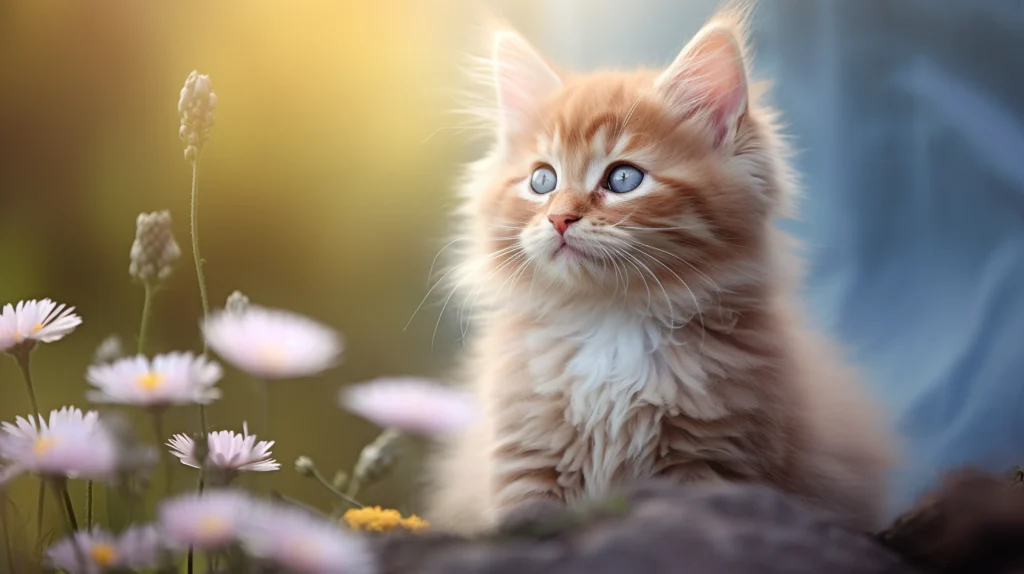
Disturbing Fact #2: Health Implications of Long Fur in Russian Blue Mixes
The second disturbing fact concerns the health implications that can come with long fur in Russian Blue long hair mix cats. While the short coat of traditional Russian Blues is relatively low-maintenance, the long-haired variants face several health and maintenance challenges:
1. Increased Risk of Hairballs
Long haired Russian Blue cats are significantly more prone to developing hairballs than their short-haired counterparts. These cats consume more fur during their grooming process, which can lead to:
- Digestive blockages requiring veterinary intervention
- Chronic vomiting and discomfort
- In severe cases, surgical removal of hair masses from the digestive tract
2. Skin Issues
The dense, long coat of a fluffy Russian Blue cat can mask skin problems until they become severe. Owners may not notice:
- Flea infestations hidden beneath the thick fur
- Developing skin infections or hot spots
- Early signs of parasitic infestations
3. Matting Problems
Unlike true Russian Blues, whose coat has a specific texture that resists matting, the Russian Blue cat with long fur often inherits a different fur texture that is prone to severe matting, particularly:
- Behind the ears
- In the armpits
- Around the base of the tail
- Under the chin
These mats can pull painfully on the skin, create environments for bacterial growth, and significantly impact the cat’s quality of life if not addressed through proper Russian Blue cat grooming techniques.
4. Temperature Regulation Challenges
The Russian Blue fur type in its natural short form is designed to keep these cats warm in cold Russian climates while still allowing for proper temperature regulation. The long-haired variants may struggle with:
- Overheating in warmer climates
- Difficulty maintaining proper body temperature
- Increased risk of heat stroke during summer months
These health considerations make it essential for owners of long haired Russian Blue kittens to be particularly vigilant about regular grooming, health monitoring, and environmental management to ensure their cats remain comfortable and healthy.
Disturbing Fact #3: The Identity Crisis and Misrepresentation in Breeding
Perhaps one of the most disturbing facts about long haired Russian Blue cats relates to their breeding and marketing within the cat fancy community. This issue affects both consumers and the cats themselves:
1. Widespread Misrepresentation
Many cats sold as long haired Russian Blue cats are deliberately misrepresented. Unethical breeders may:
- Market mixed-breed cats as rare or special “long-haired Russian Blues”
- Charge premium prices for cats that are simply domestic longhairs with gray coloration
- Make false claims about breed purity and characteristics
2. Breeding Problems
When breeders attempt to create long haired Russian Blue kittens through mixing:
- They may introduce genetic health problems from other breeds
- The resulting offspring often lack the hypoallergenic qualities true Russian Blues are known for
- Temperament traits specific to Russian Blues may be diluted or lost entirely
3. Impact on Legitimate Breeders
Ethical breeders working with true Russian Blues or legitimate Nebelungs face challenges:
- Market confusion about what constitutes a real Russian Blue cat with long fur
- Difficulty educating consumers about the Russian Blue vs Nebelung distinction
- Competition from unethical breeders selling misrepresented cats at lower prices
4. Identification Challenges
For potential owners asking “how to tell if my cat is a Russian Blue” with long hair, the confusion becomes even more pronounced:
- Standard identification markers for Russian Blues are altered by the long fur
- Traditional Russian Blue cat characteristics may be masked by features of other breeds
- Identifying a long haired Russian Blue accurately becomes nearly impossible without genetic testing
This situation has led to significant controversy within cat breeding circles, with advocates pushing for clearer consumer education about what constitutes a genuine Russian Blue versus various Russian Blue mixed breed options with long fur.
Disturbing Fact #4: Behavioral Differences Between True Russian Blues and Long-Haired Variants
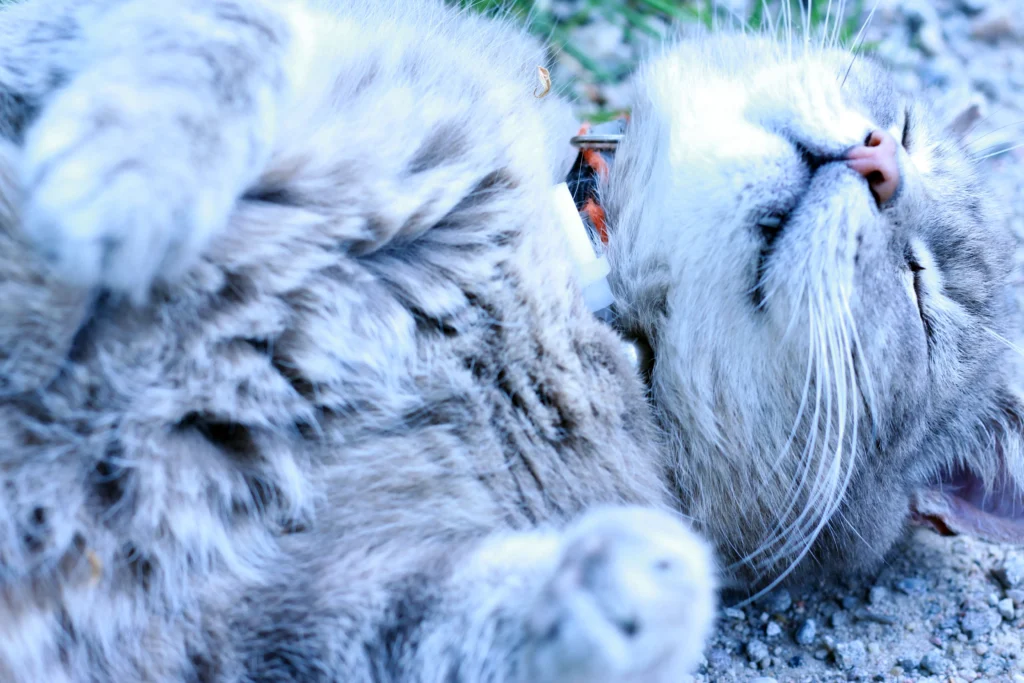
The fourth disturbing fact revolves around behavioral differences that often surprise owners of long haired Russian Blue cats. True Russian Blues are known for specific personality traits including intelligence, reserved nature with strangers, quiet voices, and strong bonds with their chosen humans. However, the Russian Blue long hair mix often displays significantly different behavioral patterns:
1. Altered Activity Levels
Depending on the mix, a fluffy Russian Blue cat may:
- Show dramatically higher or lower energy levels than expected
- Display play behaviors inconsistent with typical Russian Blue patterns
- Require different environmental enrichment than a true Russian Blue would need
2. Vocalization Differences
One of the valued Russian Blue cat characteristics is their typically quiet, soft voice. However, when mixed with breeds like the Maine Coon:
- The Russian Blue Maine Coon mix often inherits the Maine Coon’s louder, more frequent vocalization
- Owners expecting the quiet nature of Russian Blues may be disturbed by the increased vocalization
- Communication patterns can be entirely different from what Russian Blue enthusiasts expect
3. Changed Social Behavior
Pure Russian Blues typically show reserve with strangers while being deeply bonded to their families. By contrast:
- Some long haired Russian Blue kittens from mixed breeding may display either excessive shyness or unexpected gregariousness
- The predictable social patterns that make Russian Blues appealing to certain owners may be absent
- The carefully preserved temperament of Russian Blues, developed over generations, is often lost in these mixes
4. Intelligence Expression
True Russian Blues are known for their particular expression of feline intelligence. However:
- A Russian Blue mixed breed with long hair might display problem-solving behaviors more characteristic of their other parent breed
- Training responses can differ significantly from what Russian Blue training guides suggest
- Cognitive development and play preferences may surprise owners expecting traditional Russian Blue behavior
For families specifically seeking the well-documented behavioral traits of Russian Blues, discovering these differences in their supposedly long haired Russian Blue can be disturbing and lead to adaptation challenges on both sides.
Disturbing Fact #5: The Ethical Concerns of Seeking “Rare” Variants
The fifth and perhaps most socially significant disturbing fact about long haired Russian Blue cats revolves around the ethical implications of breeding and seeking these “rare” variants:
1. Perpetuation of Misinformation
The very concept of long haired Russian Blue cats as a distinct breed perpetuates misinformation about feline genetics and breed standards. This creates:
- Consumer confusion about breed characteristics and expectations
- Marketing opportunities for unethical breeders
- Challenges for legitimate breed conservation efforts
2. Health Over Aesthetics
The drive to create cats that simply look like a Russian Blue cat with long fur often prioritizes appearance over health:
- Breeding for specific aesthetic traits can overlook health considerations
- The focus on creating a fluffy Russian Blue cat may disregard the balanced development of other important traits
- Genetic diversity, crucial for health, may be sacrificed for appearance
3. Impact on Shelter Populations
The trend of seeking supposedly rare variants like long haired Russian Blue kittens has troubling implications:
- It drives breeding of “designer” mixed cats while millions of shelter cats await homes
- It creates unrealistic value perceptions based on superficial traits
- When these cats don’t meet expectations, they may end up in shelters themselves
4. Authenticity and Education Gap
Questions like “is my cat a long haired Russian Blue” reflect a larger issue in cat fancy education:
- Many owners don’t understand the distinction between breed-standard cats and mixed breeds
- The spread of misinformation makes identifying a long haired Russian Blue accurately almost impossible for average owners
- This knowledge gap allows for exploitation by unscrupulous sellers
For ethically-minded cat enthusiasts, the commercialization and misrepresentation of these cats represent a disturbing trend in how we approach animal companionship and breeding ethics.
How to Care for a Long-Haired Russian Blue Mix
Despite the disturbing facts outlined above, many people already have or still wish to adopt a long haired Russian Blue cat or similar mix. If you find yourself with one of these beautiful felines, here are essential care tips to ensure they live their best life:
1. Specialized Grooming Routine
The Russian Blue cat with long fur requires significantly more grooming than standard Russian Blues:
- Brush the coat 3-5 times weekly to prevent matting
- Use appropriate tools for the specific Russian Blue fur type your mix has inherited
- Consider professional grooming every 4-6 weeks, especially for cats with particularly dense undercoats
- Pay special attention to problem areas like the ruff, behind the ears, and under the legs
2. Diet Considerations
To help manage the increased hairball risk:
- Select foods with added hairball control ingredients
- Consider specialized diets formulated for long-haired cats
- Ensure adequate hydration to help hair pass through the digestive system
- Discuss with your veterinarian whether hairball remedy supplements are appropriate
3. Environmental Management
For long haired Russian Blue cats with their thicker coats:
- Provide cooling options during warmer months
- Ensure they have access to both sunny and shaded areas
- Consider cooling mats during summer
- Monitor for signs of overheating, especially in humid climates
4. Health Monitoring
Be vigilant about checking beneath the fur regularly:
- Part the fur to examine skin condition weekly
- Watch for early signs of parasites or skin irritation
- Monitor for any changes in grooming behavior that might indicate discomfort
- Schedule more frequent veterinary checks than might be needed for short-haired cats
5. Understanding Your Individual Cat
Rather than focusing on “is my cat a long haired Russian Blue,” concentrate on understanding your specific cat’s needs:
- Observe and document their unique behavioral patterns
- Identify which Russian Blue cat characteristics they display and which they don’t
- Adapt care routines to their individual preferences and requirements
- Appreciate their unique qualities rather than comparing to breed standards
With appropriate care tailored to their specific needs, these fluffy Russian Blue cats or Russian Blue mixed breed cats can be wonderful companions, regardless of their exact genetic makeup.
The Nebelung: The Official Long-Haired Russian Blue Equivalent
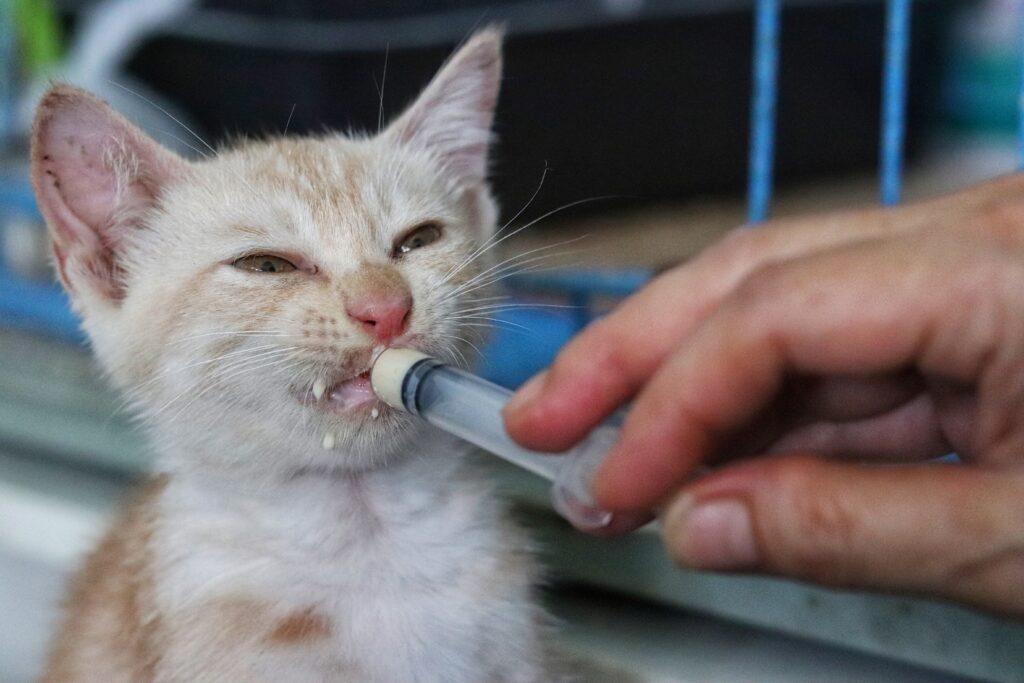
When discussing long haired Russian Blue cats, it’s important to highlight the Nebelung breed, which is the officially recognized long-haired cat with Russian Blue heritage. Understanding the Russian Blue vs Nebelung distinction can help prospective owners make informed decisions:
1. The Nebelung’s Origins
The Nebelung was specifically developed as a long-haired version of the Russian Blue:
- Breeding began in the 1980s in the United States
- The name “Nebelung” comes from the German word for “mist” or “fog,” referencing their misty blue appearance
- The breed was created by crossing Russian Blues with long-haired cats showing similar traits
2. Key Nebelung Characteristics
When comparing Nebelung cat vs Russian Blue traits:
- Nebelungs have the same blue-gray coat color but with medium to long hair
- Both breeds share the bright green eye color
- Both have similar face shapes and body structures
- The primary difference is the Russian Blue coat length versus the Nebelung’s longer fur
3. Recognition Status
Unlike vague claims about long haired Russian Blue cats:
- The Nebelung is recognized by major cat associations as its own distinct breed
- They have established breed standards and legitimate breeders
- They represent the proper way to enjoy a cat with Russian Blue-like features and long fur
4. Finding a Legitimate Nebelung
If you’re attracted to the idea of a Russian Blue cat with long fur, seeking a proper Nebelung from a reputable breeder offers advantages:
- Health testing and genetic screening
- Predictable temperament and appearance
- Support from knowledgeable breeders
- Participation in the preservation of a recognized breed
Understanding this distinction helps clarify some of the confusion around long haired Russian Blue cats and provides a legitimate option for those specifically seeking this aesthetic.
Distinguishing Long-Haired Russian Blue Mixes From Other Breeds
Many cat owners struggle with identifying a long haired Russian Blue mix versus other similar-looking cats. Here are some key comparisons with other long haired grey cat breeds and similar felines:
1. Russian Blue Mix vs. British Longhair
While both may be gray and long-haired:
- British Longhairs have rounder faces and stockier bodies
- Their eye color is typically copper to orange rather than green
- British Longhairs have a more plush, dense coat with different texture
- They generally have more laid-back personalities than cats with Russian Blue heritage
2. Russian Blue Mix vs. Persian
Gray Persians are sometimes confused with long haired Russian Blue cats:
- Persians have extremely flat faces compared to the straight profile of Russian Blues
- Persian coats require significantly more maintenance
- Persians typically have copper or gold eyes rather than green
- Their body type is much more cobby and less elegant than the Russian Blue’s foreign type
3. Russian Blue Mix vs. Maine Coon
The Russian Blue Maine Coon mix is popular, but pure blue Maine Coons are distinct:
- Maine Coons are significantly larger in size
- They have tufted ears and paws not found in Russian Blues
- Their facial structure includes a square muzzle rather than a wedge-shaped head
- Blue Maine Coons often have yellow or gold eyes rather than green
4. Russian Blue Mix vs. Domestic Longhair
Many cats sold as long haired Russian Blue kittens are simply domestic longhairs with gray coloration:
- Domestic longhairs have no standardized appearance
- Their eye color varies widely and is often yellow or gold rather than green
- They lack the specific silver tipping on the fur that gives Russian Blues their distinctive sheen
- Their personalities and behaviors show much greater variation
Understanding these distinctions can help prospective owners better identify what type of cat they actually have and adjust their expectations and care routines accordingly.
Conclusion: Embracing the Truth About Long Haired Russian Blue Cats
After exploring these five disturbing facts about long haired Russian Blue cats, it’s important to reach some balanced conclusions. While true purebred Russian Blues with long hair essentially don’t exist outside of the recognized Nebelung breed, many wonderful mixed-breed cats share Russian Blue heritage and features while sporting longer coats.
The key takeaways for any current or prospective owner of a fluffy Russian Blue cat or similar mix should be:
- Embrace Authenticity: Rather than focusing on whether your cat fits a specific label like “long haired Russian Blue,” appreciate your cat for exactly what it is—likely a wonderful domestic longhair or mix with its own unique qualities.
- Prioritize Health Over Labels: Understanding your cat’s actual genetic background helps you provide better, more targeted healthcare and meet their specific needs rather than following generic advice for a breed they may not truly belong to.
- Support Ethical Breeding: If you specifically want a cat with Russian Blue characteristics and long fur, consider the Nebelung from a reputable breeder rather than supporting those who market mixed-breed cats under misleading labels.
- Educate Yourself: Learning about Russian Blue cat characteristics, Russian Blue cat appearance, and proper Russian Blue cat grooming helps you better understand what makes these cats special and how various mixes might differ.
- Love Your Individual Cat: Whether your cat is a Nebelung, a Russian Blue mixed breed, or simply a domestic longhair with a beautiful gray coat, they deserve love and care tailored to their individual needs rather than based on a potentially inaccurate breed label.
By understanding the reality behind long haired Russian Blue cats, you can make more informed decisions about adoption, care, and expectations. This knowledge helps support ethical breeding practices while ensuring that every cat, regardless of its exact genetic makeup, receives the specific care and appreciation it deserves.
Resources for Further Reading
For more information about Russian Blue cats, long-haired variants, and proper care techniques, we recommend the following trusted resources:
- The Cat Fanciers’ Association – Russian Blue Breed Standard
- International Cat Association – Nebelung Breed Information
- Cornell University College of Veterinary Medicine – Grooming Long-Haired Cats
- Journal of Feline Medicine and Surgery – Genetic Basis of Coat Types in Cats
- American Veterinary Medical Association – Cat Breed Health Concerns
For more great articles about cat care, behavior, and breeds, visit PetsPump where you can find additional resources on:
- Understanding Cat Breed Genetics
- Best Grooming Tools for Long-Haired Cats
- How to Choose the Right Cat Breed for Your Lifestyle
- Common Health Issues in Mixed-Breed Cats
- The Truth About Hypoallergenic Cat Breeds
By staying informed through reputable sources, you can provide the best possible care for your long haired Russian Blue cat or any feline companion.



